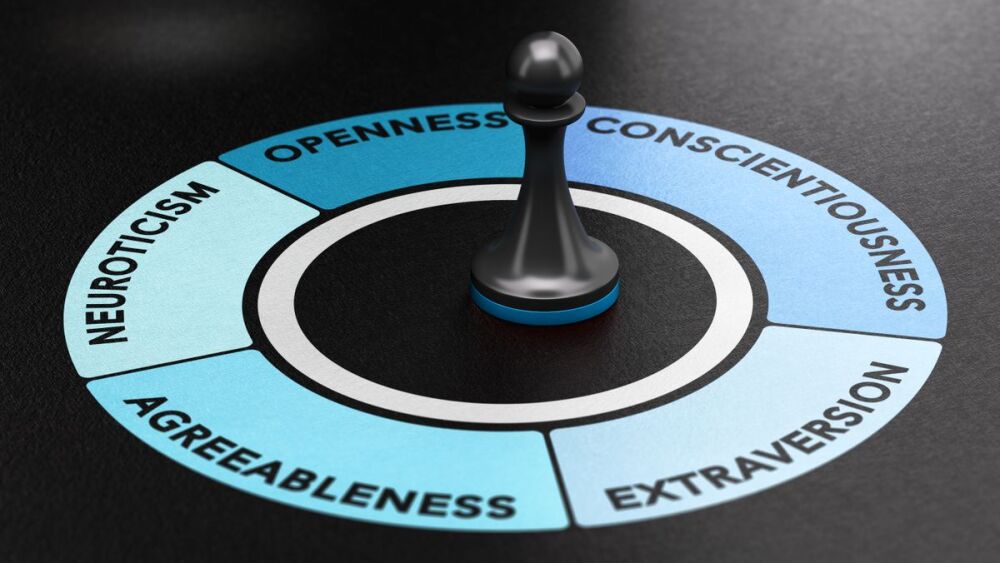I spent nearly 15 years traveling the country while teaching supervision concepts to both public safety professionals and members of the private sector. One thing that resonates from those experiences and the discussions during training is the impact personality and stress have on human performance.
It didn’t take long for me to realize that an entire block of instruction was necessary to assist participants in gaining a better understanding of how people tick and why they do what they do in certain situations. The conversations and questions during that section of the course were never the same. Each location, agency and participant brought a different series of concerns to the table.
Fast-forward to 2023, and I envision even livelier discussions with different and more complex problems than we’ve faced previously.
As public safety professionals, it’s easy to dismiss our own feelings for the sake of the job and the general expectations that come with it. This line of work requires a great deal of personal sacrifice. However, it’s important to understand the impact of personality on performance. And our personalities are connected to the feelings that evolve through our experiences and the stress derived from some of those experiences.
The big five
I was exposed to what’s commonly referred to as “The Big Five” personality traits while attending my first formal leadership development course almost three decades ago. I was a young corporal at the time and didn’t have a strong understanding of personality as it relates to workplace interactions and relationships. Make no mistake – understanding the human condition is vital to success as a public servant.
The Big Five drive human behavior and are the subject of multiple studies by different researchers, going all the way back to the 1930s. The personality traits associated with the Big Five are fairly consistent over different periods of time in adulthood. However, they can be affected by a variety of factors and even change over the course of a person’s lifetime. Before we delve into why this is important, we should explore each of the five dimensions. [1]
- Openness to experience: This dimension is associated with how open an individual is to new ideas and experiences. It also includes how comfortable someone is with the unfamiliar and their overall level of curiosity and creativity when it comes to assigned tasks and responsibilities. People demonstrating high levels of openness are often receptive to new ideas and experiences, while those with lower levels are often perceived as close-minded since they’re not as outgoing, remaining largely content with routines and familiarity.
- Conscientiousness: This trait reflects an individual’s tendency toward personal responsibility. It relates to the likelihood of someone adhering to established rules and social norms, as well as their level of self-control. Those who are conscientious are good at impulse control and working toward both personal and professional goals and objectives. According to Florida Tech, this dimension has the biggest influence on one’s performance at work. [2] Those displaying higher levels of conscientiousness often demonstrate strong leadership traits. However, these individuals are also more likely to put work first and aren’t as likely to adapt to changes that come about within the workplace.
- Extroversion: Many individuals working in public safety possess this personality trait, which is commonly characterized by one’s level of sociability and assertiveness. Extroverts are said to draw energy from being around or interacting with other people. Although extroverts typically have an easier time taking charge of situations and assuming leadership roles, this trait can lend itself to increased impulsiveness.
- Agreeableness: This dimension is an indicator of someone’s propensity toward politeness, empathy and overall cooperation with others. People demonstrating higher levels of agreeableness demonstrate more trust and affection; they’re also willing to help those in need. Interestingly, research shows higher levels of job satisfaction and decreased instances of workplace accidents in those with higher levels of this attribute. [2] Not surprisingly, people who possess lower levels of agreeableness often demonstrate counterproductive workplace behaviors and experience less success in their careers.
- Neuroticism: This trait is often defined by one’s tendency toward anxiety, depression, self-doubt and other negative feelings. Those with higher levels of neuroticism are said to be less emotionally stable, which can ebb and flow in the public safety realm based on life experiences, and the trials and tribulations of the job itself. People with lower levels of this trait typically experience less employee burnout and have greater job satisfaction. [2] They can deal with the demands of the workplace and are better capable of managing the changes that will undoubtedly occur throughout a career. Although it’s common for young people to experience higher levels of neuroticism, life experiences and maturity often reduce the ill effects over time.
Putting it all together
These five traits do not exist in a vacuum. Each can be impacted by the other, which adds to the complexity of the impact of personality on performance. Remember, each person and their associated life experience is unique.
And there are a multitude of variables that can affect each dimension. For example, Mertens points out that neuroticism generally decreases in young people as they mature, while their levels of agreeableness and conscientiousness typically increase. [3] However, a 2022 study found that the COVID-19 pandemic may have reversed this tendency to some degree, regardless of age.
The researcher, Angelina Sutin, noted how extroversion, openness, agreeableness and conscientiousness all declined between the first stages of the pandemic in 2020 and the second and third years (2021 and 2022). Neuroticism increased within all study participants, especially in younger adults. According to Sutin, personality traits may have changed as public sentiment and life experiences shifted at different times during the pandemic.
The latter can be attributed to disruptions in normal work-life activities, especially in schooling, learning methods, socializing and the overall workplace. And although the researchers conceded the changes were not large, they were similar to those found during a 10-year period of life. [3] This is only one example of how a significant life experience can impact one or more of these traits; consider the impact of an entire career in public safety. On any given shift, there may be an experience that reshapes how that person perceives the world around them and interacts with others.
Don’t overlook burnout
Employee burnout is another important factor and an ongoing concern in public safety. Sharon Maylor explored the relationship between burnout and the Big Five during her 2018 research on correctional personnel. [4] Maylor found that increased levels of neuroticism were attributed to a variety of adverse work factors, including emotional exhaustion and depersonalization. In addition, she found that neuroticism was the only personality trait associated with all three burnout dimensions. High levels of burnout, especially in public safety, often lead to decreased performance at work, lacking empathy, higher turnover and increased absenteeism. [4]
Afsar et al’s research found that maladaptive personality traits, such as neuroticism, are often associated with increased exposure to stressful life events and are more likely to make people demonstrate negative emotions and frustration. This can adversely impact overall coping strategies and make those who have higher levels of neuroticism more susceptible to psychological helplessness and impulse control. More effort is subsequently directed at managing negative emotion, which inhibits positive work performance, paving the way for burnout. [5]
The bottom line
Whether you’re a line function employee, supervisor, or commander, it’s important to understand the impact of personality on performance – yours and your coworkers. Employees are unique and bring different sets of tools in their individual toolboxes. When you consider the unique challenges associated with working in public safety, it’s easy to understand how each employee may be affected in a different way, depending on what they’ve faced over the course of their life and career. Stress can manifest at home or at work. In public safety, it usually comes from both sides of life and can make or break an employee.
Shields et al note how “psychological stress is one process that may play a role in shaping personality, especially aspects of personality involving negative affectivity.”[6] The researchers point out how major life transitions that occur infrequently, such as graduating from high school or college, can influence changes in personality. As such, it’s likely “that more frequently occurring stressors, such as stressful interpersonal interactions and unexpected or threatening events, can also lead to changes in affective aspects of personality.”[6]
This means we need to closely monitor our own lives and the lives of those we work with while remaining keenly aware of exposures that could impact the way we relate to our family members, coworkers and the public we serve. Although it’s helpful to take a personality inventory at some point in your life to see where you’re at, it’s even more helpful to know yourself and your peers well enough to detect significant changes that adversely impact on-the-job performance.
Take advantage of the resources your employer provides, such as employee assistance programs and training to help you along the way. And remember, there’s no shame in asking for help. Ego-driven professions like those found in public safety require special people to complete the required tasks. Those tasks often come with a cost, and we are typically our own worst enemy when we don’t remain self-aware and take steps toward personal betterment.
References
- Big 5 Personality Traits. Psychology Today.
- How the Big Five Personality Traits Influence Work Behavior. Florida Tech.
- Mertens M. (2022.) Personalities don’t usually change quickly but they may have during the pandemic. National Public Radio.
- Maylor S. (2018.) The Relationship Between Big Five Personality Traits and Burnout: A Study Among Correctional Personnel. Walden University – ScholarWorks.
- Afshar H, Roohafza HR, Keshteli AH et al. (2015.) The association of personality traits and coping styles according to stress level. Journal of Research in Medical Sciences, 20(4):353–358.
- Shields G, Toussaint L, Slavich G. (2016.) Stress-related changes in personality: A longitudinal study of perceived stress and trait pessimism. Journal of Research in Personality, 64:61–68.




